#or to assistance from canada in wwii
Note
If you feel down for it, I would love to see a small crossover between your Canadian and Ancient Greek characters

since you asked so nicely p:
occasionally i think about how they're actually contemporaries today, but it's hard for me to say anything significant about Canada-Greece relations from here because most of them are based in Eastern Canada (Montreal and Athens are the only sister cities between the two nations, which certainly would make an interesting dynamic! but one may have to ask @randomoranges)
so the primary connection I know is from the University of Alberta; we have a dig site near the modern village of Kallithea (in Thessaly, south of Larissa). I do regret not going to field school when I had the opportunity; I did hear secondhand that the post-dig ice cream was excellent. Since Edith is the representative for the university, she's standing in for Ed here. If I remember correctly, which nationalities can dig where is strictly controlled by the Greek government, so I think Canadians typically work on sites in northern Greece.
The only other connection I can think of off the top of my head would be the torch lighting ceremony for Calgary's Winter Olympics...
#projectcanada cities#pc: strathcona#athens and sparta adventures#aasa: athens#aasa athens#hapo doodles#digital art#clip studio paint#edith garneau#flyingkickapow#update the citation for athens and mtl being sisters is dead#so im struggling to find info on the bond#but i imagine either its a reference to greek immigration in the 1840s#or to assistance from canada in wwii#further update i did find the declaration in the montreal archives#however its basically like We should be friends because....... culture?#they're like economic and cultural cooperation!#and im like sooo you're bonding over poor econ high culture hey#my french isnt fantastic but even i can see theres like net zero info in this document lol
21 notes
·
View notes
Text
Another crash course in the United States' connection to Nazis in Ukraine:
When Germany invaded the Soviet Union in WWII, various Nazi groups were formed locally, in particular in Western Ukraine where they believed the historical population to be of "Aryan" ancestry.
Many western Ukrainians readily joined these Nazi organizations, believing themselves to be part of a master Aryan race superior to the Slavs, Jews, Poles, Roma and Russians whom they intended to purge from an independent Ukraine, free of non-Aryan ethnic groups.
The history of the Ukrainian Nazis such as Yaroslav Hunka's 14th Waffen Grenadier Division of the SS, to Stepan Bandera's Organization of Ukrainian Nationalists and how they slaughtered their way through Ukraine is well documented. Together, they were responsible for the genocide of men, women and children by the hundreds of thousands. Their brutality was extreme beyond words and on an industrial scale.
When the Soviet Union managed to finally push the Nazis out of Ukraine, more than 150'000 Ukrainians who had collaborated with the Nazis fled to Germany, but equally many stayed behind, with more than 30'000 soldiers and members of the OUN ingratiating themselves locally and using terror to keep others silent.
During this time, these tens of thousands of Ukrainian Nazis formed a resistance that continued to fight a guerilla war, as well as an espionage, sabotage, assassination, and terrorism campaign across Ukraine. The resistance was led by the OUN and like-minded Nazi and Fascist groups in Ukraine, but was run by the Nazi Galen organization which ran intelligence on the Eastern front, which in turn was managed and funded by the Nazi German leadership in Berlin.
When the war ended, the OSS (the forerunner to the CIA to which it became after 1947) then took control over the Galen organization and its operations, including local Ukrainian Nazi stay-behind militias like the OUN which continued to fight a bloody guerilla war throughout Ukraine well after the war ended.
This went on well into 1954, and in that time roughly 200'000 people died, with over 40'000 Soviet soldiers killed in Ukraine from 1945-1954. To put that into perspective, the United States lost 50'000 soldiers in 10 years of Vietnam, so similar rates of losses, except this was inside their own territory. This was a war, and the Soviets won.
Eventually, these Ukrainian Nazis fled to Western countries like Canada, the United Kingdom and the United States and many more were captured and justly sent to the gulags where they should have rotted for the rest of their days as they deserved.
But, of course, Soviet leader Nikita Krushchev famously released them from the Gulags as part of reconciliation between the Soviet peoples during his "De-Stalinization" process, and so eventually, the CIA re-activated these troops who maintained a loose underground organization of Ukrainian Nazis under US control.
Slowly, over many decades, these Nazi organizations and their members have infiltrated every level of Ukrainian governance and society. This assisted in a significant way the fall of the Soviet Union, and this was also how a Maidan Coup was even possible in 2014.
It's all a part of a continuous policy by a feudal Nazi elite in Ukraine with roots stretching back to the very initial founding of the Ukrainian People's Republic of Soviets in December 1917 and these feudal powers' subsequent fall from power.
The United States has stood firm in assisting the Nazi Ukrainian oligarchs in their goals from the very beginning, just as they did the Russian oligarchs, having joined the Western Powers' invasion of the Russian Soviet Federative Socialist Republic immediately following its founding after the October Revolution.
The US government is, and always has been, neck deep in this Nazi mess.
#nazi history#ukraine and nazis#ukrainian nazis#nazis in ukraine#history of nazis in ukraine#ukraine#ukraine proxy war#proxy war#us wars#us proxy war#socialism#communism#marxism leninism#socialist politics#socialist news#socialist worker#socialist revolution#socialist history#socialist#communist#marxism#marxist leninist#politics#progressive politics#workersolidarity#worker solidarity#WorkerSolidarityNews#us imperialism#western imperialism#Imperialism
15 notes
·
View notes
Text
non-anglo movies for language learners (and everyone else) pt 2
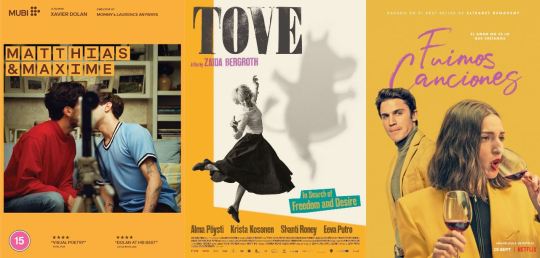
Matthias & Maxime (2019), dir. Xavier Dolan
Country: Canada
Language: French, English
Genre: Romantic Drama
Summary: Two childhood best friends are asked to share a kiss for the purposes of a student short film. Hidden feelings come to light and threaten the bond of their group of friends.
Tove (2020), dir. Zaida Bergroth
Country: Finland, Sweden
Language: Swedish, English, Finnish, French
Genre: Biographical Drama
Summary: In the midst of her artistic struggles and unconventional personal life, Tove Jansson found worldwide success from an unexpected side project: the creation of the beloved world of the Moomins. A captivating drama about the creative energy of an iconic talent and her turbulent search for identity, desire and freedom.
Fuimos canciones (2021; Sounds Like Love), dir. Juana Macías
Country: Spain
Language: Spanish
Genre: Romantic Comedy
Summary: Fashion assistant Maca has just about got her life together after a devastating breakup, when the man who broke her heart returns. With the support of her two best friends, Maca will have to confront her fears and insecurities in order to finally take control of her life.

승리호 (2021; Space Sweepers), dir. Jo Sung-hee
Country: South Korea
Language: Korean, English, Spanish, Danish, French, German...
Genre: Space Western
Summary: In 2092, the crew of a space junk collector ship discovers a humanoid robot known to be a weapon of mass destruction. Holding her ransom, they get involved in a risky business deal.
Queen (2013), dir. Vikas Bahl
Country: India
Language: Hindi, English, French, Japanese, Dutch
Genre: Comedy Drama
Summary: After her fiancé calls off their wedding, a diffident Punjabi girl from New Delhi embarks on her honeymoon to Paris and Amsterdam by herself.
Tom of Finland (2017), dir. Dome Karukoski
Country: Finland
Language: Finnish, English
Genre: Biographical Drama
Summary: In post-WWII Finland, a decorated officer finds refuge in his liberating art, specializing in homoerotic drawings of muscular men. His work, made famous by his signature ‘Tom of Finland,’ made him one of the most influential and celebrated figures of 20th-century gay culture.
#trying to shine some light into the bleak autumnal darkness with these fun movies!#10/10 would warmly rec all of these#movie recommendations#langblr#learning languages#foreign cinema
3 notes
·
View notes
Text
psych 2x12 the old & the restless
anupam nigam & tim meltreger according
Alternate titles: If you lived here you'd be dead by now
TM: It was too long. My first one was called If You're So Smart Then Why Are You Dead? AKA Little Man Hate! Other alternates for this one were Age Against The Machine & Old Case
Brian Doyle Murray
TM: Anu is a human IMDB
"We had to make him an anti-henry & we see some of where adult Shawn's philosophy comes from in life. You've got to live by the seat of your pants
(their voices sound too similar for me) I was trying to be professional on set but I was like "I'm sorry can I please get a photo"
smash cut right into the case
AN: Do you write the entire pepisode in a room with a single 40 watt lightbulb hanging from the ceiling?
TM: The writer's room is the heart of our job here on psych, it's the nerve centre where we sit around on couches & beat out stories until they make sense
Shawn being a doula again
Psychfact: they have a routine where they hide Gus in a sack & it never fails
TM is the internet guy. Mr Tim, if you are reading this *kisses you*
TM: I wanted to talk about Gus & Shawn's shirt, both wearing purple, very complimentary
(they wear matching clothes. Honestly I wouldn't doubt it in canon.)
AN: Henry's just dressing a little loud tonight. "Hey there's that pink safari shirt"
*gus sleeping on henry's shoulder* *henry not stopping him*
set design: Glorious Pines Centre for Assisted Living
AN: It's a pretty big plot point that it can't be for assisted living
TM: I have another question. Is it cool to do the rest of this commentary pants-off?
AN: Do what makes you feel comfortable
TM: *microphone sounds*
AN: No I can't help you
Describes the guitar is shimmering
TM: What's the name of the guitarist?
AN: That would be me!
TM: Him! Did you have your pants on for that recording?
(I think I got the ppl wrong. Their voices sound very similar. & I'm deaf)
AN: Absolutely not!
Never calls him grandpa after that. Throw in a good algonquian moshum
"our" grampy. Maybe he's only his grandfather in the eyes of the law, not as in adoption but as in marriage
"When your episode gets shot, the psych people will fly YOU up to watch the episode
*five minute walk to the studio if you're in LA* *airplane if it's in BC*
I call my paternal grandfather grandpapa. he was quebecois.
Opa!
That's what I SHOULD be calling my maternal grampa but he was the youngest of like 13 & his older siblings went to school during or a bit after wwii so they got beat for speaking german.
gus does a GREAT agitated
Shawn & Henry matching colours
*Gus knowing random facts*
This is like when they sent Shawn to the mental hospital
REAL retirement community. ily kelly kulchak "I get that it's an old folks home, but do they have to look old?"
Henry "I'm going to teach you a lesson, even tho normally I'd storm out of here & leave you in the lurch" I mean they did trick him into coming here
Love a good old naming scheme
Love all the gus medical terms they had to do research/lh for
"I'm pretty sure when Chris Henze emailed me I walked out of my office into the writer's office & yelled I've got booger!"
Henry: Life lesson 20. People lie & they leave without warning. *looking at Shawn*
Shawn: *rolls his eyes & shoulders in the biggest natural sigh ever*
idk anything abt marathon running
AN & TM used to run marathon in high school
BG: You can't get Indian Blood by working in a casino
Me: That's what fist fights are for
Fun fact, JRr is actually half mexican, & a ton of mexican population is mestizo (sort of like the Metis of canada, which I am) so by extension you could say he does have "indian blood" if you really wanted
Yeah, as an fnmi person it does strike me as weird that they'd say indian not native american but like this was 2007
& anupam is India Indian too lol
Some ppl say "asian indian" & "indian" not "Indian" & "american indian" really???? At that point just say native american bro. I guess "native american" implies USA when indian is used to mean anyone from the americas. Fine. (But then a lot of the time ppl also forget greenland still. Greenland is mostly inhabited by the inuit, but is owned by iceland, a european nordic/scandinavian country)
AN: & what's the name of your band, Tim?
TM: *Gasp* the friendly indians! It's systemic!
AN: & when you say Indians you mean people like me bc we're all very friendly
TM: Absolutely. & You are very friendly. .. Although our story does have a very long "why we're called friendly indians" story that has something to do with political correctness. In some ways it's ironic but it doesn't bear talking about here.
yk what I'm happy this is finally mentioned. It's been smth around my head for a while, I just haven't cared to say it.
AN: I thought this was a neat clue!
Jason Enzler? idk. Great shot tho.
I forgot my man wasn't wearing any pants
AN had to stand in for that actress when she got held up in makeup (you need someone of comparable skin tone & height) "If there's something I don't like it's having to read my work aloud in front of other people, so I was standing there shaking, having to read my script"
OFFICE MOUSTACHE COMPETITION?
"That's it, I'm putting my pants back on!"
I love henry's bathing suit
"My s-- grandson Shawn & his--... Gus"
"The extra we asked to [fall in the water] was PETRIFIED of the water!"
Yeah how DOES juliet know that if she went to cop school in miami?
yeah I DEF see the difference between seasons 1 & 2
*right after Chelsea puts her leg up on shawn while tango dancing* "She had hip problems"
DH is a skilled dancer & they put him on the dance floor standing STILL
Shawn: Where did my dad learn to tango?
Me: where did YOU learn to tango?
... "for anyone listening" like me "what would you the writer do on the set?" I've never been to the set?
HS: I'm your father, do not call me dude
Me to my mom: dude
tim *spot pitching jokes to the actors*
Yeah nursing home vs retiring home. I've been to low-care old folks homes, basically an apartment complex where you can cook your own meals & stuff but they still have a dining room (my 103y/o great great uncle lived there), mid-care where you have tons of freedom but it is still a care facility, & high-care dementia homes where people need two lots of care.
*all in one location* *network loves it*
DH& JRr: dancing for several minutes
DH, rhythmically: When Is Ensler Going To Say Cut
They were supposed to take JJ the kid to prison for this shit but they couldn't. There was supposed to be lassiter graffiti on the walls
I like it when they say "I wouldn't change a thing"
oh he hurt himself on his mountain bike This may have been the first ep since it healed
"What is the collarbone called?"
"The Collar Bone"
"You're a medical guy!"
"The clavicle!"
"Ok now you need to name six bones to redeem yourself!"
Traditional Breakdown
"I dreamt I went to heaven & met god & he sneezed!"
Bang! *watching the stunt man on the styrofoam rock*
my man has a reputation for killing people & he has only killed one person in his five episodes
Curtis *tickling her bc he can't find the pills*
"jervis babey"
TM: They exit
Jason E: they limb over the railing. Henry doesn't get a fist bump. Homage to the shining.
Show me don't tell me
I struggle with that so much but you DO need a balance
Ooh Jason E, love this shot.
0 notes
Text
News from Newfoundland & Labrador, Canada, 21 July
A man was spotted running in Carbonear with a rifle case, leading to a large police response and the establishment of a safety perimeter.
After an extensive search, an empty rifle case was found but no firearm.
The suspect was later located and taken into custody, but the investigation is ongoing to determine if a criminal offence has occurred.
2. The provincial government reports that 94% of eligible high school students have fulfilled graduation requirements.
High school transcripts are now accessible to students through the PowerSchool online portal.
Students seeking assistance with accessing transcripts can contact the High School Certification Office via phone or email.
3. The 50th anniversary of a devastating landslide in Harbour Breton will be commemorated, which claimed the lives of four children and brought significant changes to the town.
Heavy rain led to a destructive landslide, causing four houses to be swept into the harbor and resulting in the tragic deaths of the Hickey family's four children.
The aftermath of the disaster included the relocation of several homes and the implementation of a development ban in the landslide area, with a monument erected at the site to remember the victims.
4. The public is being warned about a fraudulent website claiming to offer driver's licenses in Newfoundland and Labrador in a short amount of time for a fee.
A valid driver's license can only be obtained from a Motor Registration office and these illegal products do not have the same high-level security features.
Residents are advised to never share personal or financial information on unknown or unsecure websites and should report any suspicious communication to local police.
5. Concerns persist over waterbomber staffing levels in the province, with only one crew currently available and one pilot scheduled for time off.
The province's fleet of five waterbombers has been reduced to just one operational aircraft since 2018.
NAPE President Jerry Earle warns that the province may struggle to respond effectively to potential fires without sufficient staffing for the remaining four planes.
6. Parks Canada has made the decision to close several rivers and brooks in Gros Morne National Park to fishing due to high water temperatures [per VOCM].
7. Officials in Labrador City are investigating the cause of dead fish washing up on the shoreline near the town's sewage plant.
The fish are covered in a heavy sludge and other items like used tampons have been found on the beach.
The town is working with provincial and federal governments to determine the cause of the fish deaths and prioritize saving the fish population.
8. Newfoundlanders and Labradorians are mourning the passing of legendary WWII veteran Rod Deon.
#CarbonearIncident#RCMP#SafetyPerimeter#PoliceResponse#RifleCase#HighSchoolGraduation#StudentTranscripts#HarbourBretonLandslide#50thAnniversary#VictimsCommemoration#FraudulentWebsite#DriversLicenseScam#WaterbomberStaffing#FirefightingResources#GrosMorneNationalPark#FishingClosure#LabradorCityFishDeaths#EnvironmentalConcerns#WWIIVeteran#RodDeon#HonoringVeterans#RememberingHeroes
0 notes
Link
Petition
0 notes
Text

Elsie MacGill went to college in the early 1920s, a time in which women didn’t work as engineers. But she had her dream and mindset that “our direction in life is determined by something within us.” And she had the love and support of parents who were active participants in the feminist movement.
So she began her studies at the University of Toronto in 1923 in electric engineering. Four years later she graduated, the first woman in Canada to earn a degree in electric engineering.
She then moved to the U.S. for work and to study for a master’s degree in aeronautical engineering at the University of Michigan.
Towards the end of the master’s program she developed polio. Paralyzed from the waist down with doctors believing she’d never walk again, Elsie finished her degree. She wrote her final exams while in the hospital. Then with focus and exercise, over time, she also began walking with the assistance of two canes.
Elsie went on to become an accomplished engineer, rising to the role of Chief Aeronautical Engineer at Canadian Car and Foundry. Amongst a number of responsibilities, during WWII she focused on making production line operation efficient as demand for development increased, and to design solutions to ensure the Hawker Hurricane fighter aircraft, which the company was now in charge of building for the Royal Air Force, could operate during the winter.
As her career progressed, she took an increasing role in advocating for women’s rights. In her words, “I have received many engineering awards, but I hope I will also be remembered as an advocate for the rights of women and children.”
—
“Elsie MacGill: a snapshot biography.” sources:
Montagnes, James. “Canada’s Only Girl Chief Aero Engineer: Pretty Elsie MacGill, Once of M. I. T., is Whiz at Her Job, but Likes to Knit, Cook, Play Bridge, Too.” Daily Boston Globe (1928-1960), Apr 28 1940, p. 1. ProQuest. Web. 17 July 2020.
Sissons, Crystal. “Elsie Gregory MacGill: Engineering the Future and Building Bridges for Canadian Women, 1918–1980.” Order No. NR50755 University of Ottawa (Canada), 2008. Ann Arbor: ProQuest. Web. 17 July 2020.
Elsie MacGill Wikipedia
National Archives of Canada
0 notes
Text
What are the Benefits to Cultivating Emotional Intelligence with Phil Johnson
Emotional intelligence leads to a better level of awareness. These forms of resistance, which are rooted in your amygdala patterns and sociocultural boundaries, will result in inspiring leadership. Energy physics is the answer to drama, turmoil, and conflict. Stop squandering your energy and increase your awareness. The Master Businesses Leadership's Phil Johnson joins us today to discuss the value of emotional intelligence.
Remarkable Quotes:
Phil: We need the ability to feel the fear and anxiety that change, and innovation always create in us.
Travis: People don't buy for need; they buy for want they buy for that desire.
Phil: You can't fake being authentic. You can't fake being real.
Phil: If your employees don't feel engaged, neither do your customers.
Highlights:
{01:33} The Master of Business Leadership
{02:00} Three things we need to know about outputs
{03:00} Emotional Intelligence
{04:20} Benefits of stretching your comfort zone
{10:00} How to work through the fight-flight-freeze
{29:00} What the world would look like if everyone had emotional intelligence
Phil Johnson bio:
Phil was born in Brantford, Ontario Canada on December 1, 1953. His family lived in a small 2-bedroom post-WWII bungalow where his mom and dad raised 3 boys. Phil was the youngest and quite surprised as his mother was in her early 40s when I was born. Three boys in one small bedroom with a coal-burning furnace with no air conditioning.
Phil was born 6 weeks prematurely, weighing approximately 4 pounds. His first 6 months were spent in an incubator at the local Brantford General hospital. Phil has dyslexia. It is a neurological disorder he was born with. He failed Grade 3 and Grade 5 and was labeled as a “slow learner”.
Phil started working when I was 9 years old pulling copper wire out of factory dumpsters and selling it for 5 cents a pound. By the time Phil was 12, he had a part-time job working in a production factory loading boxcars and working as a caddy at the local golf course.
On December 3, 1967, Phil’s mother died from cancer. It was two days after Phil’s 14th birthday. Phil made a decision that was to change the trajectory of his life. It was a snowy January night around midnight and Phil was taking his dog Duke for a walk. Standing behind a local factory Phil decided to “go for it”. He was going to see what was on the other side of the hill and come back and help his friends that had already given up on life.
That decision began the 54-year journey that continues today. Phil became an “A” student throughout the rest of grade school and high school. His dad died in May 1974 as he was completing Grade 13. Four years later he graduated at the top of my class from the De Groote School of Business at McMaster University in Hamilton Ontario, Canada. He also played football and basketball.
Phil spent 5 years studying Electrical Engineering while beginning what turned out to be a 20-year career in the semiconductor industry. By the time his career in that industry had ended, he had become a corporate executive. He was traveling over 60,000 miles per year throughout North America and the Pacific Rim.
Phil eventually decided to leave corporate America, breaking away from the herd to lead it in a better direction. A short time later he turned down two Vice Presidential roles so that I could begin the creation of what has become the Master of Business Leadership program.
For the past 21 years, I have been an executive coach assisting executives and organizations to bet on themselves by developing their emotional intelligence.
Connect with Phil
MBL Newsletter ==> https://lnkd.in/dqxVrFZK
https://www.linkedin.com/in/philipjpjohnson/
Nonprofit Architect Podcast Links
More Episodes
http://nonprofitarchitect.org/blog
Ultimate Podcast Guide
https://nonprofitarchitect.org/ultimate-podcast-guide/
Ultimate Podcast Course fully WASC accredited
https://envisageconnect.com/education-training/partner-products/synergy-learning-institute/
Subscribe and Leave a Review
https://podcasts.apple.com/us/podcast/nonprofit-architect-podcast/id1481292481
Get Fully Funded with Sharing the Credit
https://mpro.sharingthecredit.com/appointly/appointments_public/form/DBF73E8A-7D93-438E-B42C-6683022EE380
Check out this episode!
0 notes
Text
WWII, the Italian Mafia, and You (Piofiore)
The mafia in Burlone went a lot more lowkey during WWII. Each family tried their best to avoid Mussolini and the Italian government
Burlone was forcefully overtaken by Mussolini
If Dante is still alive, you're sought out by the church along with Dante to retrieve the relic.
If Dante isn't alive, then the relic is deemed lost by the church. They would have to wait for after the war before they can even attempt to retrieve the relic.
If you ended up with Yang, then your role as Key Maiden is over, and the church never tries to find you. Emilio prays for your happiness and safety.
Burlone is filled with Italian soldiers, and being caught with the mafia meant death.
If you're with Dante or Nicola, they determine that it would be better if the family went into hiding. They do their best to make sure the rest of the family is alright living on their own, and 'disbands' the Falzone mafia.
You, Dante and Nicola all end up living alone in the Falzone manor, with the most minimal of servants and mafia members with no where else to go.
Some men avoided conscription here; changing their identities or living in hiding. Others left to go fight. Dante and Nicola avoided conscription by faking their deaths. Only the church knows that they're alive.
If you're with Yang, you've long since left Burlone, and stay with him in London. However, he was called to serve the chinese military. Needless to say, he didn't go, and for whatever reason he wasn't pursued.
As soon as he deems it unnecessary to stay in London, he moves the both of you to somewhere remote and far away from London, where you stay until the end of the war. He doesn't care to put you in unnecessary danger, and would rather stay out of the way until the end of the war.
Somehow, he still receives a constant supply of goods from China and the local town. He still has connections to the mafia here.
When Henri learns of Germany's invasion of Poland and eventually France, he writes a desperate letter to Dante, asking for assistance in getting you out of France.
With what little power Dante has left at his disposal, he manages to get the both of you to Canada, where your knowledge of French helps get you by. However, Henri returns to France to fight in the war.
Henri is shot, and is sent to a hospital in Britain to recover. However, he is sought out by the military to become an undercover agent in Paris, due to his knowledge of English, French, and German.
The occupation of France angers him, so he says he'll do anything to ruin whatever plans they have and stop them. He's a great saboteur and gets a ton of intel on German military plans.
Gilbert also disbands the Redford family, as he doesn't want to risk harm to any of his comrades. He uses as much as he can of the families' funds to either get them out of the country, or somewhere safe.
He doesn't support what the Italian government is doing, nor does he feel its safe here anymore. He moves the both of you to America.
You and Orlok are relatively safe at the church, and don't see much of the war.
However, you do volunteer to be a nurse at the local military hospital. You constantly see the horrors of the war on a day by day basis. Orlok, upon seeing how distressed you are by the constant stream of gruesome injuries, also ends up working at the hospital with you. He tries his best to cheer you up.
#piofiore#dante falzone#nicola francesca#orlok#yang#gilbert redford#henri#riton#headcanons#historical
35 notes
·
View notes
Text
Got around to watching the latest Zenkaiger episode with Bon World, and I've been thinking about how I didn't even catch some of the references without Secchan's explanations, even though I was raised in the Jodo-Shinshu Buddhist tradition (one of the main sects in Japan) and have regularly attended services with my local sangha ever since I moved back to the Twin Cities, where I can access services without a 1 1/2 hour train ride one way or, in some places I lived during my 20s, without the nearest sangha being literally hundreds of miles away.
(cut for ramblings about Buddhism in the US vs Buddhism in Japan, even within the same tradition and general Religious Stuff)
The Japanese-American tradition of Obon is fairly different from the Japanese celebration of the holiday, perhaps nowhere more visible than the dances. Since Japanese-American communities in the US (and Canada) were made up of settlers from many different villages, each with their own Obon traditions, the dances that make up a central part of the celebration are, here, a selection from across Japan (mostly selected for their ease of people being able to learn them quickly) and native creations. "Ei Ja Nai Ka," based around the Japanese-American experience of the WWII Internment Camps and composed by PJ Hayashibara of San Jose Taiko (I've met her personally, and she is an awesome and supremely talented woman), is one of the more widespread Japanese-American specific dances, but there's also a number of English-language dances, which I was first introduced to when I went to the Oregon Buddhist Temple for their 2019 Obon. In Japan, from my understanding, a local temple will do their local dance all evening, and not the long, varying program of different dances that US temples do, and also how the entire ancestor-worship element of the holiday is pretty sidelined over here.
And I kind of was thinking about those differences (how Obon is oftentimes a major festival/fundraiser for US temples, and I sort of get the feeling that it isn't so much so in Japan), and how in general, at least in the Nishi-Hongwanji Jodo-Shinshu tradition, the Japanese-American and Japanese traditions are, to some extent, drifting apart. Although all ministers and ministers' assistants have to have training at the home temple in Kyoto, Japan, the people attending such training differ greatly depending on where they're from.
My local sangha has a minister's assistant who's an immigrant from a temple family in Japan, where she can trace back for generations upon generations the men (and it's always men) who've headed up their temple as head ministers. Since she's a native Japanese speaker, she attended the training with other native Japanese, and she was an outlier as a relatively young woman — nearly all attendees in the rest of her class were older, conservative Japanese men, the heads of their families.
In contrast, our other minister's assistants are 3rd generation Japanese-Americans, and they attended a class of North American and European students at the Kyoto home temple, and their classes were extremely diverse (lots and lots of people who'd grown up in other, non-Buddhist traditions), relatively young, and a very large portion were LGBT. The Buddhist Churches of America has been performing same-sex weddings for decades before such marriages were legal in the US, so I suppose that shouldn't be that surprising.
Which all circles back to me watching a Japanese children's show with the (twisted) embodiment of a holiday I regularly celebrate as a main villain, yet not being able to catch some of its references.
The Japanese-American tradition is, with each passing generation, moving farther away from the Japanese tradition, even though there is some cross-pollination (that Oregon Buddhist Temple Obon I attended? Their head minister is from Japan). It's, from my impression, more liberal, and very much more accepting of outsiders — a necessity since the Japanese-American community continues to intermarry and a certain percentage will leave the sangha either for their spouse's (probably Christian) church or to go full on atheist (which…we're halfway there anyway, putting our faith in Amida Buddha's Vow of creating a Pure Land to be reborn into which is ideal conditions for being reborn as a Buddha, yet not revering him as an actual God, nor regarding Siddhartha Gautama, founder of Buddhism, as a God, though absolutely regarding him as the founder of our faith as it currently exists and the discoverer of how a human born on this Earth may attain Enlightenment and a way to transcend the cycle of birth-death and Suffering). Like, we have Japanese immigrants who've grown up in the Jodo-Shinshu tradition joining our sanghas (a word which refers to the church community), but they're currently a relatively small potion compared to converts who didn't grow up in the tradition. Heck, even our relatively tiny local sangha has gained members during the pandemic and our Zoom services. I can only hope that, once it's safe to gather in person again, they'll come to meet us in person and eat D's manju which I've missed dearly over the last year and a half.
I definitely suspect that the Japanese-American church's relatively liberal POV is a drawing point for those converts, and I'm not complaining in the least.
Honestly, I suspect that the POV of interconnectedness that has been instilled in me by my temple has informed a LOT of my political views.
#super sentai#zenkaiger#buddhism#obon#deep thoughts#maybe#in conclusion#someone hug stacey because this episode has been Trauma for him#and i hope that he realizes that the reality the Worlds generate#is not reflective of reality
12 notes
·
View notes
Text
USS LST-325
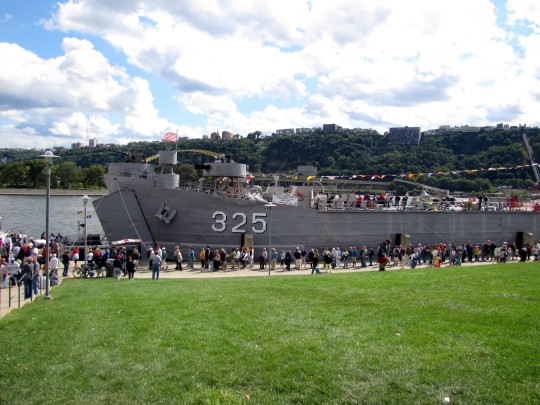
LST-325 was one of more than 1,000 Landing Ship, Tank vessels built by the US during WWII, which were designed to carry men, machines and cargo onto the beach. While the first 30 were built at Norfolk and Philadelphia naval yards, the bulk of the LSTs were built at several “cornfield shipyards” along the Ohio and Mississippi rivers, which were considered safe from Axis attack as well as having the needed capacity to build the LSTs while the more traditional yards built carriers, battleships and other fighting ships. There were two yards in Pittsburgh, PA, Dravo Corporation on Neville Island was the lead yard, and produced 145 ships, The American Bridge Company, several miles up the Ohio River in Ambridge, PA, completed 119. The Missouri Valley Bridge & Iron Co. in Evansville, ID built the most of the ‘cornfield’ yards, 171 ships. Finally, Chicago Bridge and Iron fabricated 156 LSTs in Seneca, IL. After completion, the ships sailed down the Ohio and Mississippi rivers to New Orleans, where final fitting out was done before they were sent off into the Atlantic and Pacific. The ships were not named, and were instead referred to by their hull number. LSTs were not designed for speed, with their twin GM 900hp diesel engines propelling the ship to a maximum of 12 knots (during launch, the ships reached a maximum of 18 knots travelling down the ramps). Crews referred to the ships as “Large, Slow Targets”, but the vessels served with distinction in all theaters of the war, including the mass landing in Normandy on D-Day.

LST 325 was launched from the Philadelphia Naval Yards on 27 October 1942, and was commissioned on 1 February of the following year. The ship’s first actions were in the North African theatre, participating in landings at Gela, Sicily and Salerno, before joining the armada for the Normandy landing, specifically Omaha Beach. Over the following nine months, LST-325 made more than 40 trips across the English channel, bringing in men and supplies and evacuating wounded. The vessel returned to the US in May 1945, before being decommissioned on 2 July 1946, after which it was placed in the Atlantic Reserve fleet. In 1951 it was transferred to the Military Sea Transportation Service (predecessor of today’s Military Sealift Command) and took part in Operation SUNAC (Support of North Atlantic Construction) as USNS T-LST-325 operating in the Labrador Sea, Davis Strait, and Baffin Bay to assist in the building of radar outposts along the eastern shore of Canada and western Greenland. Decommissioned again in 1961, T-LST-325 was sent to Greece in 1964 as part of a grant-in-aid program, serving in the Hellenic Navy as the RHS Syros, L-144, from 1964 until 1999. In 2000, the ship was acquired by The USS LST Memorial, Inc, and sailed back to the US for restoration to serve as a memorial to the men that built and sailed the LSTs. In 2003, after completing refit in Mobile Bay, the ship sailed up the Mississippi River to Evansville for a ten-day stop, during which more than 35,000 people toured LST-325. In 2005 she sailed up the US East Coast for 60 days, visiting several ports including Alexandria, VA and Buzzard’s Bay, MA, before returning to Evansville, her new home port. In addition to serving as a memorial in Evansville, LST-325 travels up and down the rivers each year, visiting other cities to remind people of the contributions of the inland shipyards, as well as to memorialize those that built the LSTs. In 2010, LST-325 made it all the way up to Pittsburgh, giving me a chance to see her.

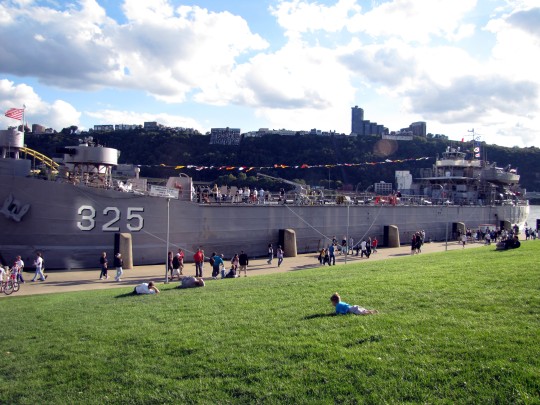
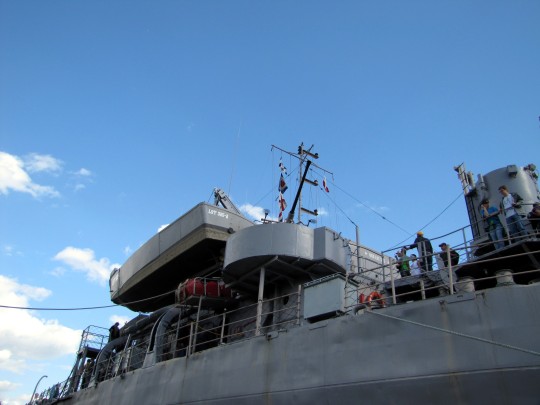


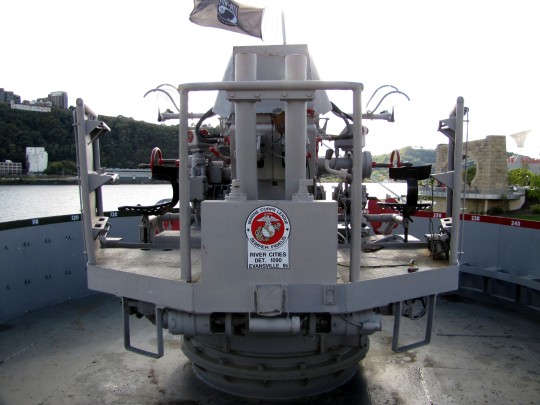
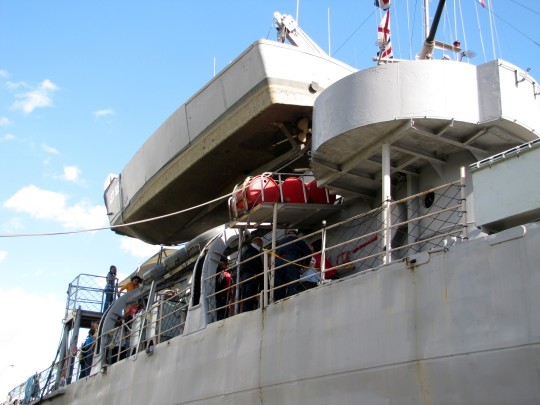





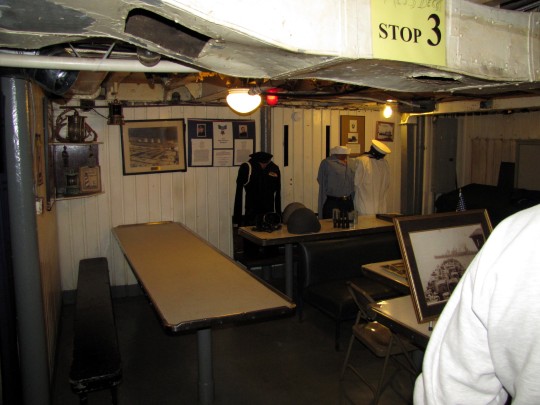
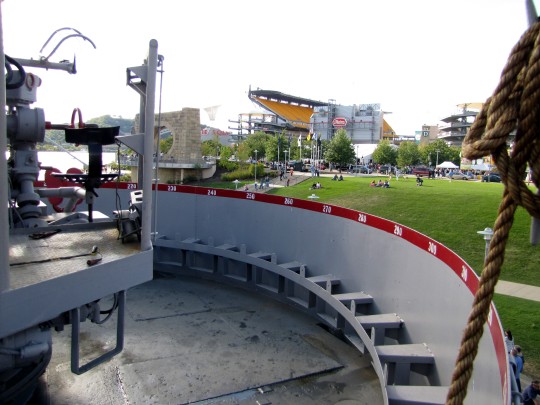
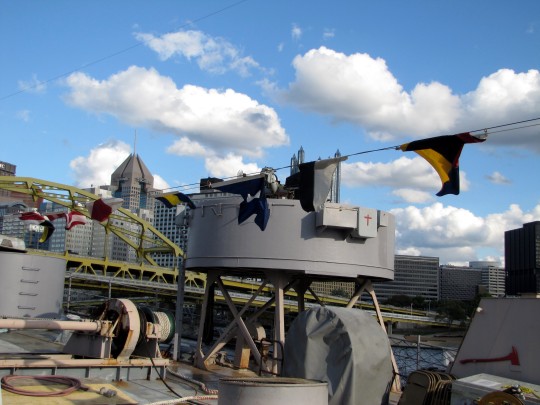
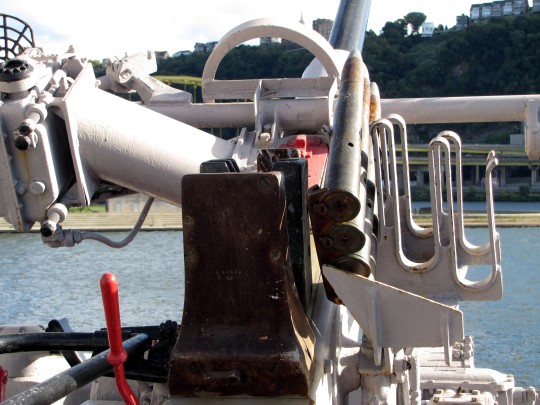
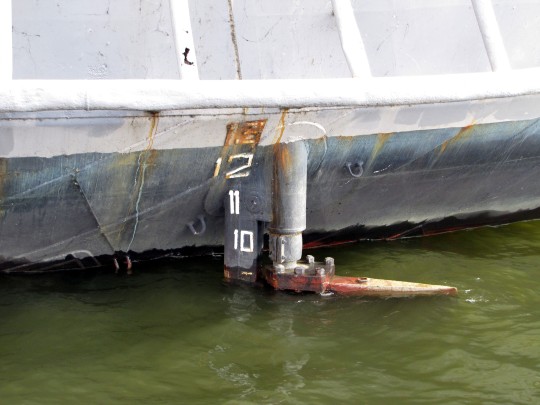
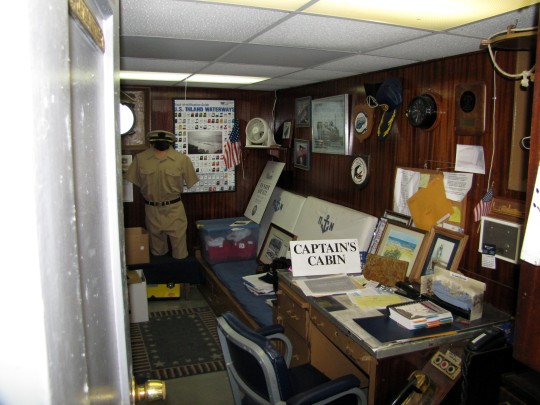
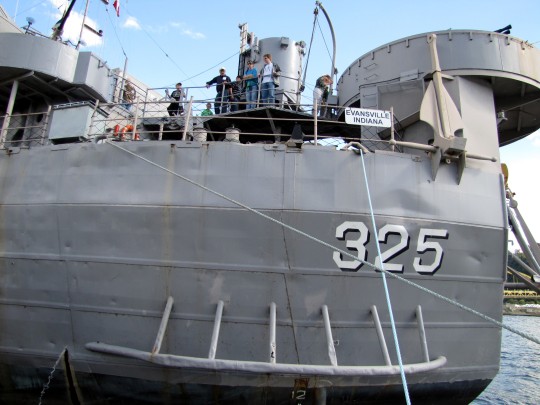


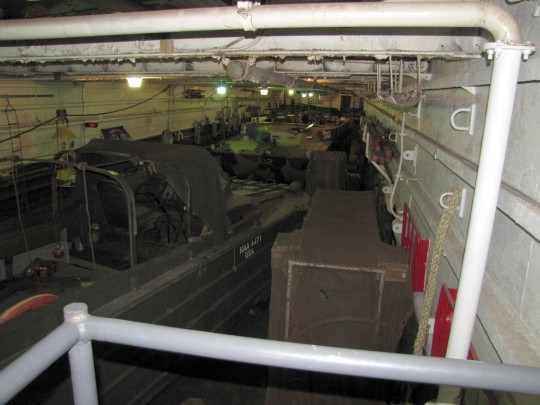
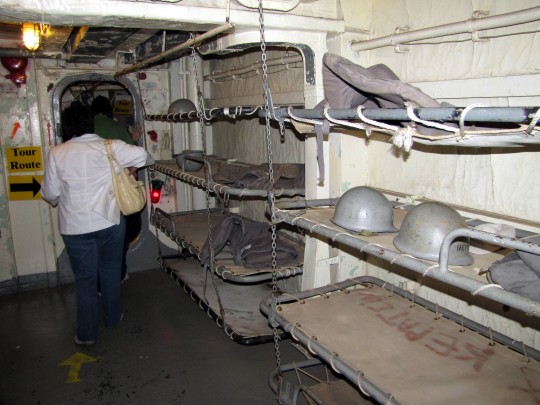

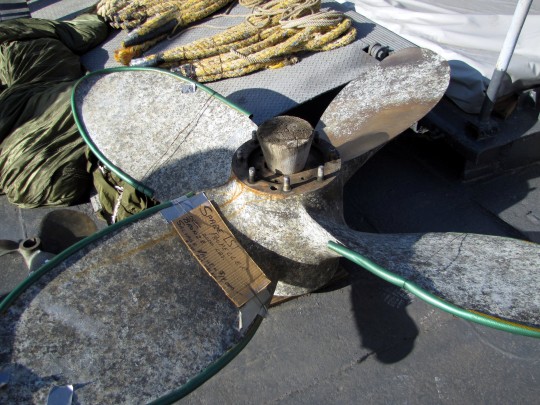

#lst325#lst 325#wwii#ww2#wwii history#wwii naval shps#navy shps#landing ships#Pittsburgh#evansville#pennsylvania#indiana#illinois#philadelphia#us navy#normandy
8 notes
·
View notes
Text
FOMA 44: Forgotten Sarajevo
During our online conversation Lejla texted me that it is difficult to come across reference material in Bosnia in general as libraries and archives have been burnt down and there hasn’t been enough digitisation.
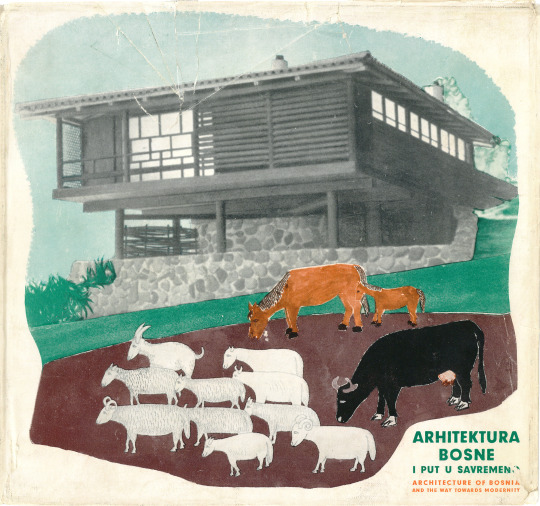
Architecture of Bosnia and the Way to Modernity by Dušan Grabrijan and Juraj Neidhard, Sarajevo 1957
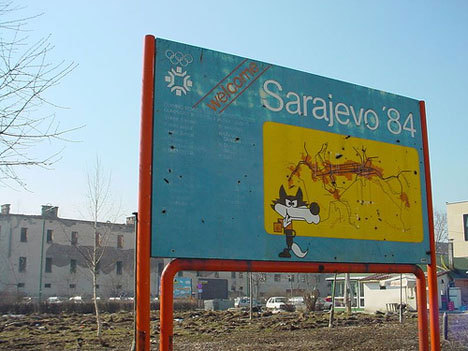
The 1984 Winter Olympics known as Sarajevo '84, was held between 8 and 19 February 1984 in Sarajevo, Yugoslavia.
Let's have a look of five impressive Forgotten Masterpieces in Sarajevo. Designed by Živorad Janković and Halid Muhasilović, Skenderija is a multi-functional cultural and sports centre completed in 1969. This building was the first of its kind in the former Yugoslavia and in many ways acted as a prototype for many similar complexes that were later built throughout the country. As such, Skenderija played a curial role in the development of not only the local architecture, but also of Yugoslavian modernist architecture as a whole. It was the first hybrid building in the former Yugoslavia that fused together many different functions (sports, performance, entertainment, shopping, food, service, etc.) within a singular multi-storey complex that employed a modernist aesthetics prevalent of the time.
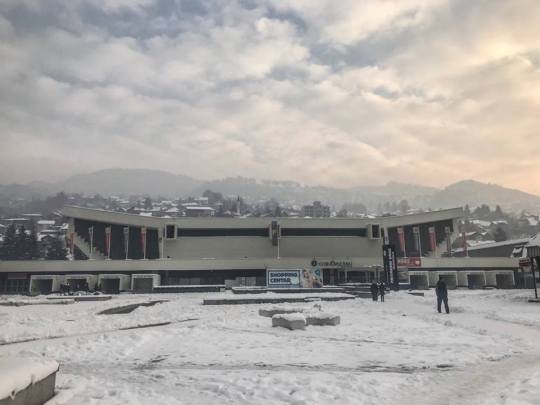
The complex consists of three buildings; a large sports hall in the first, a number of smaller sports halls in the second building and Dom Mladi (House of Youth) with cultural content in the third. | Photo Lejla Odobašić Novo
The buildings are arranged around an open plateau, a city agora, under which is located a subterranean commercial level with a circulation path that allows access all three buildings. The project was innovative in the complex construction system used that allowed for large spans. It also reflected the modernist ambition of honesty in the material use, with the concrete articulation of all the façades. In many ways, due to its scale and cultural significance, the complex shifted the symbolic gravitation from the old city centre and established an additional point of prominence. In urbanistic terms it expended the city beyond the exiting east-west axis and opened the south bank of the river Miljacka.


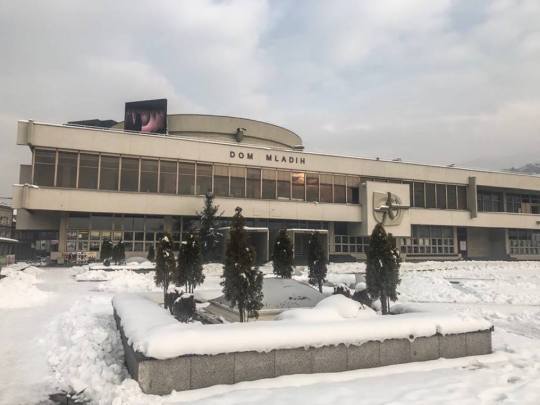
Skenderija allowed Sarajevo to take on a new cultural significance that would later be sealed by the Winter Olympics in 1984. | Photo Lejla Odobašić Novo
The Communist Party of Yugoslavia started the project of the Sarajevo’s main railway station as an architectural competition with the ultimate goal of physically uniting the country through its railway system. At the beginning of Socialist Yugoslavia, the country’s political views strongly aligned with those of the USSR and the remainder of the communist bloc. As such, Yugoslavian architecture at this time, although modernist in spirit was still heavily influenced by the social realism that was used as a political tool and prevailed in the majority of the eastern bloc countries.

The Railway station was opened in 1952 and in its thirty years of function, up until the siege in 1992, the building was one of the most monumental structures in Sarajevo. | Photo via Mirza Hasanefendic
Social realism in Sarajevo brought on a range of contradictions in its architectural articulation. It ranged from architecture for the masses most clearly articulated in the residential settlements for the worker’s housing to that of highly articulated and relatively well executed public buildings, mostly designed through architectural competitions.

The main railway station in Sarajevo reflects the complexity of a more western modernism. | Photo Lejla Odobašić Novo
Once the initial reconstruction phase after WWII was completed cultural and institutional buildings became the next phase of focus. One of these included the Ministry of Public Health. It is heavily modernist in nature, however, the social realist influence remains visible. It was built only a few years after the main railway station but the break away from the social realism is even more apparent in this case. This shift in architectural expression occurred as a direct result in the political and ideological drift between Yugoslavia and USSR.

The building relies on pure geometry, abstracted decoration in the form of vertical fins at the front façade, simplified openings and a receded top floor which allow for a terrace on the top floor. | Photo Lejla Odobašić Novo
The principal focus of the social realism buildings was an exaggerated scale in order to instill the notion of grandness of the state and to inspire deference towards the authorities, which in this case was the Communist Party of Yugoslavia. Since this building was designed and built as a Ministry of Public Heath, Ivanović strived to employ majority of these principles but he broke away from some keys aspect that defied socialist realism at the time.
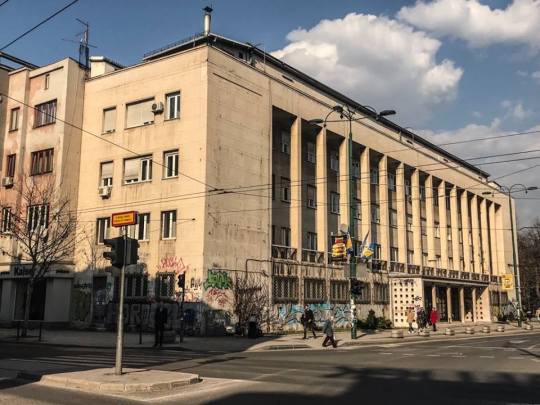
The building follows the rigid symmetry often employed by social realism and breaks a number of rules, which shift it towards a more ‘western’ modernist building. | Photo Lejla Odobašić Novo
The Communist party took control of Yugoslavia following the end of WWII in 1945. Like the majority of European cities, a considerable damage was suffered by the urban fabric in Yugoslavia as well. As such, one of the major tasks of the new socialist system was to rebuild as fast and as efficiently as possible. However, both the amount of resources and the number of available architects was limited and as such the initial wave of reconstruction was very utilitarian.
One of the most notable residential projects that dates back to the post-war period is the residential complex on Džidžikovac that resulted from a design competition set forth in 1947 and won by the above-mentioned Kadić brothers. The project was completed in just over a year which resulted in relatively poor construction quality, which was the case with many residential buildings constructed around this timeframe.

The design and the modernist spirit of the project render it as one of the most notable residential complexes in Sarajevo. | Photo Lejla Odobašić Novo
The complex contains three linear residential blocks each consisting of a number of three-storey interconnecting buildings that cascade along the existing topography. In addition, the three blocks are surrounded by open green space that integrates the building into the existing site forming a sense of a unified complex. Although the project has been declared as a protected national monument in 2008, the reconstruction done since the end of the siege in the 1995, has been to a large extent insensitive to the initial design principles of the Kadić brothers.
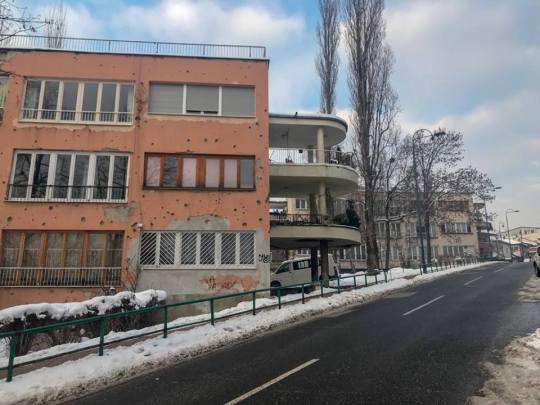
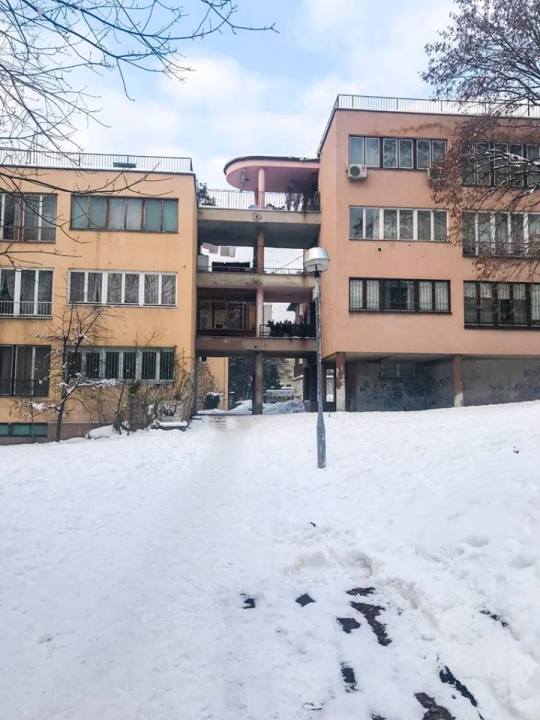

Each block have a set of semi-circular terraces suspended by receded columns - the signature feature of this project. | Photo Lejla Odobašić Novo
Completed in 1956, six years after the Ministry of Public Health, Residential Building and Šipad Headquarters breaks away from the social realist influence and draws inspiration from Oscar Niemeyer instead, thus creating one of the most prominent modernist buildings in Sarajevo.
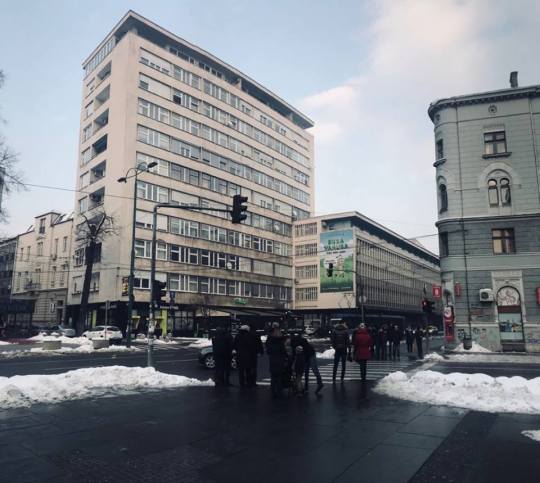
Although the two buildings are separate entities they lean on each other and share a part of the side wall. | Photo Lejla Odobašić Novo
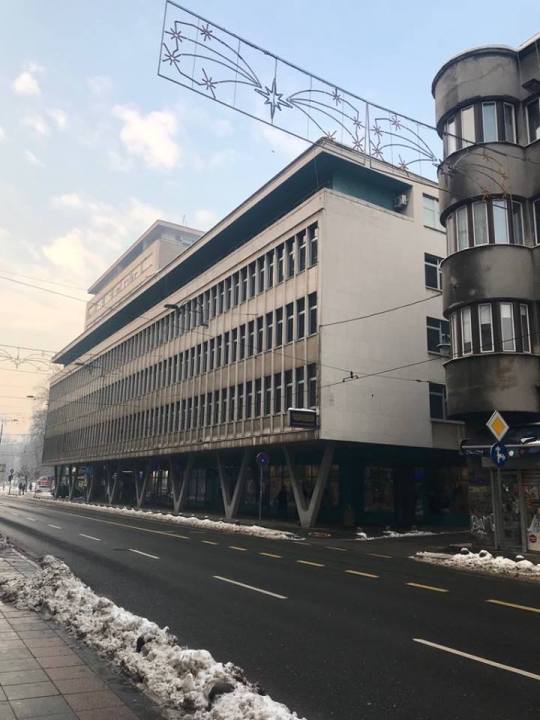

In order to allow for a continuous pedestrian flow, Ivanović frees part of the ground floor of the Šipad Headquarters, and thus creates a covered promenade lined with the distinct V shaped columns visually suspending the building off them. | Photo Lejla Odobašić Novo
---
#FOMA 44: Lejla Odobašić Novo

Photo by © Yasin Emir
Lejla Odobasic Novo is a Bosnian-Canadian architect and an architectural theorist who is currently working between Sarajevo and Toronto. She obtained her bachelor and master’s degrees from the University of Waterloo School of Architecture where she also held a research position and upon graduation worked as an Adjunct Professor at the Rome Campus. She holds a professional licence issued by the Ontario Association of Architects (2014) and is an Assistant Professor at the International Burch University in Sarajevo where she obtained her PhD and currently teaches architectural design and architectural theory. Lejla’s research focuses on the role of architecture, and in particular cultural heritage, in conflicted and contentious places. Within this field, she has carried out projects, exhibitions, publications and other cultural initiatives including her work with Liana Breser, Jerusalem-Sarajevo: In-between Cities, that was exhibited in Canada, UK, Bosnia and Croatia (2010-2011). She has also participated in DAAR Decolonizing Architecture residency and research group in the Palestine under Eyal Weizman, Sandi Hilal and Alessandro Petti (2010). Lejla is also a member of Kuma International, an International Center for the Visual Arts from Post-Conflict Societies. In addition to her academic work, she has also worked in architectural practices internationally including Toronto, London, Madrid, Rome and Istanbul.
49 notes
·
View notes
Photo

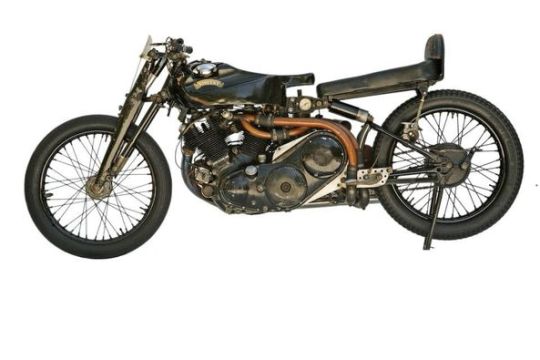
REG DEARDEN’S SUPERCHARGED VINCENT
1949 VINCENT BLACK LIGHTNING
FRAME NO. RC4436
ENGINE NO. F10AB/1C/2536
Sold for £ 221,500 (US$ 304,687) inc. premium
Following a glorious era throughout the 1920s period very few British motorcycles were mechanically capable of contesting the rarefied world of Record Breaking. Since WWII the most frequent choice of machine for the Blue Riband of Motorcycling has been Vincent’s 1000cc Black Lightning. Vincent is undoubtedly revered as Britain’s most cherished medium-volume manufacturer but, having begun in 1928, and started manufacture at Stevenage (Herts), regularly producing several hundred machines each year, it was to universal disappointment the firm ceased trading in 1955. However, when arguably at their peak during the late 1940s, the American rider Rollie Free – formidable former Indian racer, and renowned for his hatred of Harleys – gained the World Speed Record at Bonneville Salt Flats, Utah, USA, for Un-Streamlined Machines on Fuel. This was achieved in September 1947 on a much-modified version of the 50-degree ohv vee twin. The Vincent was owned by John Edgar and, by arrangement, had been especially prepared at the factory. Famously, those last few mph of the Record attempt had proven elusive until Free stripped down to his bathing trunks, whereupon, he thundered through the traps at the magic two-way average speed of 150.31 mph. This important Record saw Vincent’s contemporary advertising proclaim they made the World’s Fastest Standard Motorcycle. And, very soon there after, the firm were prompted to introduce the Black Lightning model, incorporating a similar engine specification to that of the Edgar/Free prototype. Priced in excess of £400 it was easily Britain’s most expensive motorcycle. Is it any surprise, perhaps, but barely 30 examples were ever produced and sold. Today, a Black Lightning is categorically acclaimed as the Holy Grail of post war motorcycles.
By its very nature Record Breaking is traditionally the most demanding of arenas. The roll call of contestants with a realistic chance of success has never extended beyond the resourceful few. However in 1949 The Motor Cycle, Britain’s leading 2-wheel publication, offered a Trophy, plus a generous £500 prize [more than the price of a new ’Lightning] for the first successful all-British attempt on the absolute World Speed Record, for which full streamlining was clearly a necessary requirement. The Record had been held since 1937 by BMW at 173.54 mph. Inspired by the Blue Un’s offer Reg Dearden, a popular high profile m/c dealer at Chorlton-cum-Hardy [Manchester], purchased a Black Lightning direct from the factory, expressly for the purpose. There was a widely held belief in those days that the guarantee for reaching these targeted speeds was most easily achieved by the fitment of a supercharger. In early 1950, therefore, Reg returned the bike to Stevenage for the retro fitting of a purpose-built Shorrocks ’charger, together with the necessary but complex “plumbing” system, which was fed via an outsize S.U. carburetor and float chamber. Other mandatory tasks included an extension of the gearbox and engine main shafts, the making of a special clutch contained by specially cast alloy casings, fabrication of a dramatically re-shaped ex Grey Flash fuel tank and, in order to correctly install the supercharger within the chassis, the main frame, engine plates, and swinging arm were strengthened-and-lengthened” by about 6 inches. The work was undertaken under the personal supervision of Phil Vincent, MD, with advice and assistance from George Brown and various other luminaries constantly involved at the Stevenage factory. Press reports of the time quote Dearden’s subsequent claims to the effect that every individual part on the bike was virtually now “one-off”, simultaneously admitting in a rueful mode how the work had cost him several thousand pounds! The work in fact proved such a massive undertaking that it took the factory until mid-July to complete.
Public appearances of the Vincent, thereafter, were infrequent, inasmuch the next reported sighting of the now supercharged Vincent was as part of a spectacular display in a branch of Kings of Oxford, whose 20-odd shops were owned by Stan Hailwood [Mike’s father], an old friend of Dearden. Reg himself, meanwhile, was enjoying a close relationship with Norton over an arrangement that entailed the entering and supporting of a posse of promising young riders to compete in the Isle of Man TT and elsewhere, riding the Bracebridge Street machines. At any one time Dearden had at least 20 Manx Norton competitors “on his books”, a program that continued for many seasons, undoubtedly consuming an immense amount of time and concentration on his part. It is probably this reason, along with the news in 1951 that NSU had now upped the Speed Record to 180.29 mph, which caused the modified Vincent to lay dormant until 1953, when it was briefly announced in the technical press that the intended rider for the Record attempt – presumably at Bonneville – would be Les Graham [father of Stuart]. Les was already 500cc World Champion, and had been assisted by Dearden in his early career. Sadly, he was fatally injured in the 1953 Senior TT, causing yet another delay and a possible reduction in enthusiasm for the Record Breaking project. Even so there are some recorded instances of the bike in use. It was timed at Pendine Sands at 150 mph, but ran its bottom end. Following this setback it was further modified at the Stevenage factory, whose tester briefly rode the machine, fitted with silencers, on the public highway. Reg, too, apparently tried a series of straight-line Burn Outs, using “slave” tyres. And, in a letter to Classic Bike dated April 1992, Ireland’s Vincent agent, Harry Lindsey confirms how he too once rode the bike on an undisclosed aerodrome strip, although his all too brief “blast” was swiftly curtailed due to engine shaft failure.
The setting by NSU, in 1956, of a new Speed record at Bonneville, at 211.40 mph, seemed somehow to rekindle Dearden’s interest, for it was reported he would now fly the bike to the Salt Flats – although no rider was specified – in his own Cessna airplane, for one last serious attempt. Yet again it came to nought when the CAA refused to certify the aircraft concerned for this particular mode of transportation! The Vincent thus stayed unused and neglected at Dearden’s premises over the next decade, until it was eventually sold to Eric Biddle, a publican friend, in 1970. Biddle never used the machine, but sold it on to Michael Manning, a scientist, who lived in Pennsylvania, USA. In 1977 Manning took the Supercharged Vincent to a Vincent Owners Club Rally in Canada, where it was ridden over a short distance but, after returning to his home in Philadelphia, it again remained in storage until acquired in 1987 by the present owner, a passionate collector and user of Vincents, from Texas.
The vendor’s association with the Stevenage product is a profound and lifelong relationship. As a true aficionado he knows instinctively if a Vincent needs restoring, or when sympathetic preservation is the better route. In the case of the Dearden Vincent he’s applied the latter philosophy. After his purchase, and following a gentle re-commission, he was struck by the machine’s obvious originality. Considered alongside its minimal Running Time, over a period of sixty years, this originality creates something that is utterly unrivalled. During the last 20 years the vendor confirms that the bike has been run on several occasions. The resultant racket emitted by those huge open pipes, he claims, resembles no other. In 1999 the well-known UK photojournalist Mick Duckworth sampled the Vincent on a remote Texas highway for a 7-page feature in Classic Bike. The generous terrain allowed Mick sufficient space, and enough time, for familiarization. After reaching a speed close to 100 mph in bottom he bravely engaged second gear…at which point he suddenly remembered exactly what a precious artefact he was astride. The test ride concluded happily, however, with the owner stating, “You’ve probably ridden this Vincent further than anyone in living memory!”
The historic Black Lightning reposes in all its visual potential, slightly oily, yet with its original HT leads and the OE Avon tyres first fitted at Stevenage so long ago; even the rims’ black factory paint remains in place. Original low usage Black Lightnings are rare, supercharged ’Lightnings rarer still. This one is unique
10 notes
·
View notes
Text

• Rhodesian Air Training Group
Motto: Tica Simba Nezana- "Strength will come to us through our fledgelings."
The Rhodesian Air Training Group was a Royal Air Force (RAF) training unit and base for Allied and commonwealth pilots to train in africa in Rhodesia, (modern day Zimbabwe).
Before WWII even started the British Air Ministry had begun planning to set up air training centres outside Britain; away from where there was air activity over the country and where the weather could be relied upon to be consistently good. Canada was the first country to be first chosen, the scheme being called the Empire Air Training Scheme. Ultimately the countries involved in training aircrew comprising pilots, navigators, bomb aimers, air gunners, wireless operators and flight engineers included Canada, Australia, New Zealand, South Africa, Southern Rhodesia and the United States. At the outbreak of war in September 1939, the facilities in Rhodesia for air training were too small to be of any assistance to the Royal Air Force (RAF) Major D. Cloete, M.C., A.F.C. had been charge of a small air training scheme from 1937 of two RAF Officers and twelve other ranks who were seconded to Rhodesia with four Audax and six Hart aircraft and based at Hillside (later renamed Cranborne) but they only trained local Rhodesian territorial forces and personnel from the Rhodesia Regiment. In 1938 the unit was separated from territorial force and on May 12th, 1938 the Governor, Sir Herbert Stanley, presented the first seven Rhodesian flying badges at a parade at Hillside. There was an agreement that, in the event of war, Rhodesia would send an air unit to Kenya for service with the RAF and accordingly three Audax and three Hart aircraft were despatched on August 28th, 1939, six days before the actual declaration of war.
Lieut.-Col. C.W. Meredith arrived in Rhodesia in June 1939 as Staff Officer Air Services and Director of Civil Aviation. The British Air Ministry were very interested in expanding the air training into a much larger program as they wanted most, if not all, air training out of England and to involve the training of other allied personnel as well as Rhodesians. It was decided to start off in Rhodesia with one initial training wing through which pupils would pass on to three Elementary Flying Training Schools (EFTS) and matching them, three Service Flying Training Schools (SFTS) The establishment of six new Air Stations required a considerable amount of building, all of which had to be done using local resources. In Salisbury (now Harare) the EFTS was at Belvedere, with the SFTS at Cranborne; the second pair of schools would be established at Bulawayo (Induna and Kumalo) with the third pair at Gwelo (Guinea Fowl and Thornhill). At this early stage in January 1940, Meredith’s staff consisted of two territorial officers who had joined at the outbreak of war for administrative duties, and a typist. Initially RATG headquarters were based in the Salisbury suburb of Belvedere and with a heavy building program ahead, the immediate need was for staff to cope with layouts, design and construction of airfields and hangers, supplies of building materials and finance and accounting. At Cranborne total strength of the air station was 137 officers and other ranks with 16 aircraft available for training. These comprised four serviceable Harts, one Audax waiting rebuilding, eight serviceable Tiger Moths and one being repaired, and two Hornet Moths.
Major C. W. Glass MC, an architect by profession, was released from his civilian employment with the Public Works Department and agreed to transfer with the rank of Squadron Leader, later Wing Commander, with the title of Director of Works and Buildings. His Section was wholly responsible for the layout of Air Stations and the design and construction of buildings for whatever purpose. Later after building had been completed additional sections were added included air staff, air training, signals, armament, administration, equipment, engineering, personnel, medical and legal. In April 1940 the Rhodesian Air Force Training Scheme and the Empire Air Force training Scheme really began; but was known locally as the Rhodesian Air Training Group. In the same month the first draft of pupil pilots arrived at Belvedere and the air station was declared officially opened by Air Chief Marshall Sir Robert Brooke-Popham, in the presence of the Prime Minister Godfrey Huggins, E.L. Guest and C.W. Meredith. The first group graduated from elementary air school in July and by November 2nd, 1940 the first pilots to be trained by the RATG passed out at Cranborne air station, five of whom were Rhodesians. When war broke out in 1939 the Air Ministry employed the Royal Air Force Volunteer Reserve (RAFVR) as the principal source of aircrew into the RAF and this continued into the 1950’s. In fact the programme was such a success that it soon was realised that the Rhodesian Air Training Group could become vital to the war effort for training aircraft personnel and although the bulk of the trainees were British, they also received Greeks, Yugoslavs, Australians and South Africans. Ezer Weisman, later to be President of Israel, trained as a pilot in Rhodesia. RAF training units would still be based in this country until a decade after WWII had finished.
The war time Elementary Flying training School (EFTS) gave a recruit 50 hours of basic aviation instruction on a simple trainer, such as the de Havilland Tiger Moth. Pilot cadets who showed promise went onto training at a Service Flying Training School (SFTS) where they were awarded their “wings.” The SFTS provided intermediate and advanced training for pilots, including fighter and twin-engined aircraft, on the North American Harvard and Airspeed Oxford aeroplanes. Other trainees went onto different specialities, such as wireless, navigation, or bombing and air gunnery. The next air station to come into operation was at Guinea Fowl, Gwelo (now Gweru) in twelve weeks from bare veld to the commencement of flying training. Its construction included provision of water supplies, water-borne sewerage and building a rail siding for the special trains bringing aircrew from Cape Town. To relieve congestion at the air stations, six relief landing grounds for landing and take-off instruction were established. Two aircraft and engine repair and overhaul depots were set up and a central maintenance unit to deal with bulk stores of aircraft. In late 1940 it was decided that Cranborne and Thornhill would be used to train single-engined pilots, or fighter-pilots, and Kumalo and Heany air stations would train twin-engined pilots.
At its peak there were about 12,000 adult male white personnel and about 5,000 adult male Africans employed. There were also about 200 white women in the Women's Auxiliary Air Service who were employed in post offices and on clerical duties at various stations. A Rhodesian Air Askari Corps was formed under Wing Commander T. E. Price to provide armed guards and non-armed labour. From the May 1940 until the March 1954 the Royal Air Force (RAF) had a presence in Rhodesia in the form of the RATG which trained aircrew for the RAF, from many different countries, including Great Britain but also from Australia, Canada, South Africa, New Zealand, USA, Yugoslavia, Greece, France, Poland, Czechoslovakia, Kenya, Uganda, Tanganyika, Fiji and Malta as part of the Empire Air Training Scheme. On November 27th, 1947 after the wat the Southern Rhodesian Air Force (SRAF) was re-established as a separate unit and from that date until RATG closed, both the RAF and the SRAF took to the skies above Rhodesia. The beginning of the Cold War brought a renewed need for aircrew training; the RAF re-vitalised the Rhodesian Air Training Group (in May 1948) which continued to grow with the Korean War, although nothing like its WWII level.
Today there are almost no memorials monuments and plaques within Zimbabwe to mark the great efforts and personal sacrifices that were made by African and European servicemen and women and civilians to the Allied cause during the World War. However the Commonwealth War Graves Commission (CWGC) does an outstanding job in commemorating those who lost their lives for their country and are buried within Zimbabwe.
#second world war#world war 2#ww2#wwii#rhodesia#zimbabwe#aircraft#air force history#royal air force#african history#military history#aviation#British Commonwealth#allies
21 notes
·
View notes
Photo
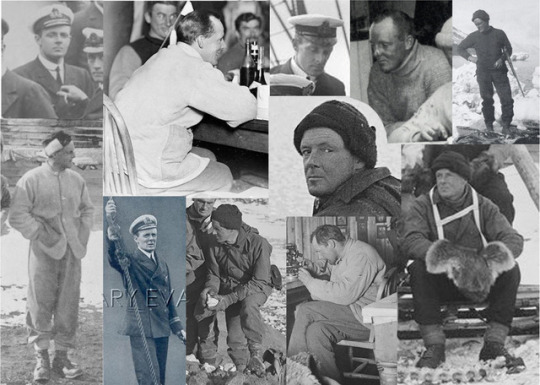
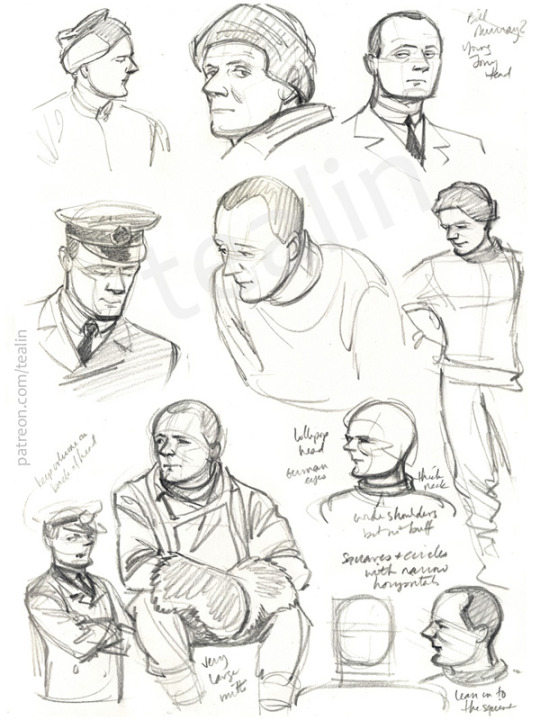

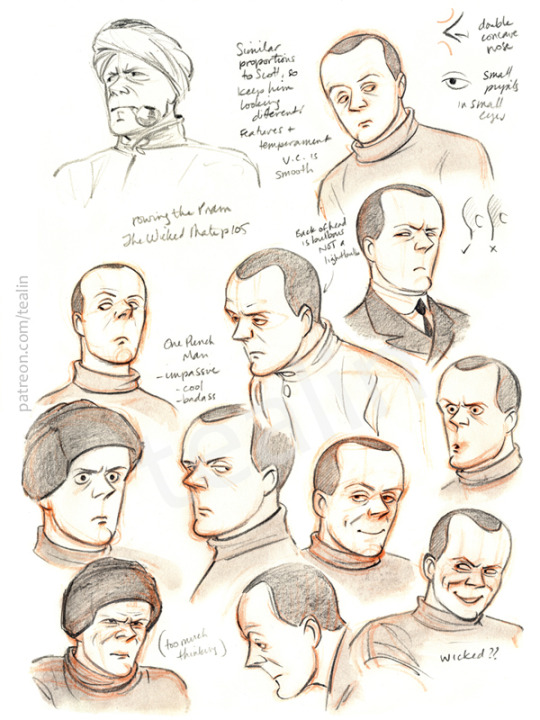
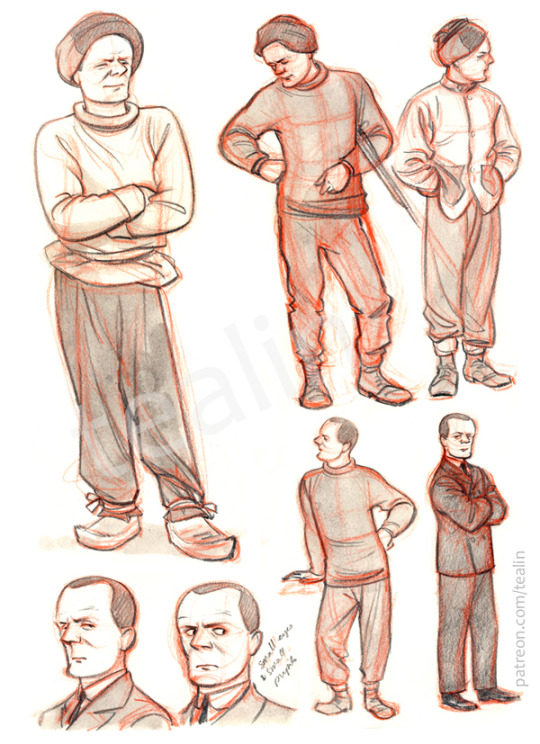

Lt. Victor Lindsay Arbuthnot Campbell
Victor Campbell was born in the seaside town of Brighton in 1875, the son of a naval captain. His education was at Eton, but instead of going into politics or academia, he followed his father to sea, first in the merchant marine and then getting a commission in the Royal Navy. This seemed to suit him well enough, but in he resigned in favour of a gentleman’s life on a fjord in southwest Norway with his wife and son. Here he learned to speak Norwegian, met a young lieutenant named Tryggve Gran, and learned how to ski. When his wife Lillian lost her sister, their marriage was deeply strained by her grief, so the offer to join the British Antarctic Expedition may have been as much an easy escape as a promising professional prospect. Little did he know how harrowing it would turn out to be.
Campbell was appointed first mate on the Terra Nova, a position in which he oversaw order and discipline on the ship, ensuring she was run efficiently – a job at which he excelled. His experience in both the merchant and naval services had given him the experience to command sailors from both, and shape the scientists into a working sailing crew as well. Older than most of them, and with a receding hairline that aged him further, he was authoritative and a little intimidating – Cherry-Garrard recalls being “very frightened of Campbell” (WJ: 4) – but he can't have been too bad, because he often came in for a ribbing from his subordinates, including being the butt of the popular song “Everybody works but Father, that poor old man.” He acquired the nickname “The Wicked Mate”, though no one has recorded exactly how, and I have reason to believe one of the more truculent ponies was named after him – the pony Victor would end up being led by Bowers on the polar journey.
Campbell was to lead a party of six, which was supposed to split off and spend the next year exploring the largely unknown territory of King Edward VII Land on the eastern side of the Ross Sea. On arriving at their intended landing place, however, they discovered it already occupied – Amundsen had taken the Fram there and was well into setting up his base. After a cordial exchange day, wherein the British toured Framheim and the Norwegians looked round the Terra Nova, Campbell's Eastern Party became the Northern Party, making their way to the northern tip of the west side of the Ross Sea, via the main base to deliver news of their discovery.
The year at Cape Adare may have been disappointing for Campbell, as the area had already been explored and offered little opportunity for gong further afield, but it passed relatively smoothly. The real fun began the following season when the Terra Nova returned and moved them down the coast for what was supposed to be a short field trip before they would be picked up again. When the ship returned, a belt of pack ice prevented her from making landfall; Pennell, who was in command, made several attempts, but as the sea was beginning to freeze over entirely and the window for getting safely out of the Antarctic was closing, he very regretfully abandoned the attempts.*
When Campbell's party realised they probably weren't going to be picked up that year, they made all possible arrangements to see out an Antarctic winter without a hut or winter clothing. They dug a cave out of a snow bank – not quite tall enough to stand up in, and with minimum ventilation in the interest of warmth – and slaughtered all the seals they could find, for food and fuel. Their food was cooked and "igloo" heated with an improvised blubber stove which filled the space with smoke. They couldn't heat their home above freezing for fear of the roof collapsing, and endured constant drips. Occasionally they would do calisthenics for exercise in the cramped space. Campbell imposed a line down the middle of the cave to divide officers' quarters from men's, and all agreed that anything said on the other side of the line, by one party, would not be heard by the other, providing a necessary release valve. “We spent eight months living in a hole in the snow,” Priestley, the Northern Party's geologist, wrote. “It was an experience that might have broken the strongest team. That we survived, most of us in good fettle, was largely due to our leader's quality. … Personal courage, fortitude, altruism were the sine qua non for polar people who would be remembered. In all of them, Victor Campbell was unsurpassed.”**
Pennell had informed HQ that the relief of Campbell was proving troublesome, so the men at Cape Evans knew the Northern Party was in dire straits, unless the Terra Nova's last attempt on the way to New Zealand had succeeded. When things went wrong for the southern parties – Evans' scurvy and the Polar Party's failure to arrive – the question of what to do in their direction was weighed against what might be done to help Campbell. The decision generally came down to the idea that if men from Cape Evans could get north to Campbell, Campbell's men could get south to Cape Evans, and it was better not to double the number of people at risk. Nevertheless, once all hope for saving the Polar Party had been extinguished, Atkinson – who had ended up in charge as most senior officer – took a small party up the coast in the desperate hope of doing something, but the poor state of the sea ice turned them back. Atkinson put the biggest decision to a vote: Next summer, do we try to rescue the Northern Party, or set off south to find out what happened to the Polar Party? They voted South.
Campbell and his men, greasy and black with blubber soot, and suffering from dysentery (very badly, in one case), did make their way down the coast in the spring, when the sea ice was in better shape. They got in to Ross Island about a week after the southbound Search Party departed. Cherry-Garrard, on his return with said party, called this “the first real bit of good news since February last. … All the Northern Party look very fat and fit, and they are most cheerful about the time they have had, and make light of all the anxious days …” (WJ 493)
The tragedy of the Polar Party overshadowed all other aspects of the expedition, and Campbell, with his “extreme shyness”**, happily stayed out of the limelight, so the story of the Northern Party fell by the wayside. Like many he got caught up in WWI, and survived the Battle of Jutland, which Pennell did not. After the war he was assigned to Arkangelsk, assisting British efforts during the Russian Civil War, where Atkinson also happened to be on a hospital ship.
After a few years commanding Atlantic ships, Campbell retired from the navy again and, apparently still not put off the cold, set up a lodge and cabins outside Corner Brook, Newfoundland. Lillian and his son Nigel followed him there, though the marriage ended for good shortly after. Nigel went to study geology at Cambridge with his father's Antarctic friend Priestley, and Campbell Sr came out to visit once or twice; Debenham, who was head of geography and starting up SPRI, wrote that he was growing potatoes and hair out in Newfoundland, and only wanted to talk of his potatoes while his friends only wanted to hear about his hair.^
When WWII broke out, Campbell was anxious to lend his efforts, and took charge of the “Corner Brook Navy,” defending the west coast of the island in partnership with the Canadian Navy (Newfoundland only became part of Canada in 1949). He stayed at his country lodge – married now to the daughter of a famous Norwegian painter – into his late seventies, but finally ill health drove him to an apartment in town, where he died in 1956. He is still remembered in Corner Book, and at least one resident takes every opportunity to tell visitors about him. How the “extremely shy” Wicked Mate would like that, I don't know, but I'm glad they do.
Most of this information is taken from the preface to The Wicked Mate: The Antarctic Diary of Victor Campbell (Erskine Press 1988), with the exception of:
* Letter from Pennell to Sir Lewis Beaumont, SPRI
** Raymond Priestley in his obituary for Campbell, The Geographical Journal 1957, Vol. 123 Part 1, pp131-2
^ Letter from Debenham to Joseph Kinsey, at the Alexander Turnbull Library
#victor campbell#the wicked mate#terra nova expedition#british antarctic expedition#scott expedition#northern party#drawings#character design
25 notes
·
View notes
Text
African American history month – Black history month
The annual observance of Black History Month in February has its origins dating back to 1926 when the historian Carter G Woodson, author of ‘The Journal of Negro History’, announced the second week in February to be “Negro History Week”.
The flame flickered until, in 1970, the first Black History Month was celebrated at Kent State University between January 2nd and February 28th.
Six years later during the celebration of the United States Bicentennial, President Gerald Ford urged Americans to “seize the opportunity [of Black History Month] to honor the too-often neglected accomplishments of Black Americans in every area of endeavor throughout our history”.
Of course, Black Americans have made ground-breaking contributions in many areas. In this article we concentrate on scientific and social advances made in the field of medicine. We examine what remains to be achieved.
Contents [hide]
James McCune Smith, MD (183-1865)
Rebecca Lee Crumpler, MD (1831-1895)
Dr. Charles Richard Drew (1904-1950)
Marilyn Hughes Gaston MD (1939-)
James McCune Smith, MD (183-1865)
James McCune Smith was the first black American to receive a medical degree. Racist admissions practices at U.S. medical schools meant that he had to study at the University of Glasgow Medical School, where he was first in his class and in 1837 gained his Doctorate in Medicine. On his return to the USA he practiced in New York and became the first black American to own and operate a pharmacy (West Broadway). In 1863 he became Professor of Anthropology at Ohio University.
In this Academic year 2019/2020 Glasgow University opens the $120 million James McCune Smith Learning Hub. The hub provides a ‘state of the art’ learning and teaching facility for over 2,500 students.
Rebecca Lee Crumpler, MD (1831-1895)
Rebecca Lee Crumpler was the first black American woman to receive an MD degree. Like James Smith 25 years before, she had many obstacles to overcome before being accepted, 1859, at The New England Female Medical College, Boston. She was aided by the sponsorship of the doctors with whom she had worked for the previous eight years. Despite the interruption of the Civil War she earned her medical degree in 1864 (aided by an award from the Wade Scholarship Fund).
At the end of the Civil War she set up practice in Richmond, Virginia, working with missionary and community groups to provide medical care to newly freed slaves. On returning to Boston, Rebecca Crumpler focused on the treatment of illnesses affecting women and children.
Her book, ‘A book of Medical Discourses in Two Parts’, was a manual for women looking after themselves and their children. Published in 1883 it was one of the earliest medical texts written by an African American and possibly the first by a woman.
Dr. Charles Richard Drew (1904-1950)
Known as ‘Father of the Blood Bank’, “Dr Charles Drew broke barriers in a racially divided America to become one of the most important scientists of the 20th century” (American Chemical Society).
In 1922 he entered Amherst College in Massachusetts (on a football, track and field scholarship!). He was one of only thirteen African Americans in a student body of six hundred.
Apart from his athletic prowess Drew showed no great promise until a biology Professor sparked his interest in medicine.
As with many other fields, medicine was largely segregated. As African American this limited his education and later his career options. Nevertheless, his perseverance gained him a place at McGill University, Montreal, where he gained his MD and CM (Master of Surgery) degrees, graduating second in a class of 137.
During his internship at Montreal Hospital (1933-1935) Drew developed his interest in transfusion medicine. He went on to earn his Doctorate at Columbia University based on his assessment of previous research into blood and transfusion, blood chemistry and fluid replacement.
His key findings concerned the collection, processing and storage of blood products. This led to his appointment to Head of Blood for Britain (BFB), a project which collected and transported much needed blood and plasma to Britain during WWII.
When the program ended in 1941 BFB had collected over 14,000 blood donations and through the Red Cross shipped more than 5,000 liters of saline solution to England.
Drew returned to Howard University (DC) where he had briefly studied (1935/6) as Head of the Department of Surgery, the post he held until his untimely death in a car accident.
His self-proclaimed mission was to “train…young African American surgeons who could… in turn nurture the tradition of excellence”.
Marilyn Hughes Gaston MD (1939-)
Born to a family of limited means Marilyn Hughes was strongly influenced by her mother: “You can be whatever you want to be” and her godmother, who took her every Saturday with a group of local children to a local ‘whites only’ swimming pool. She, Marilyn’s godmother, succeeded in desegregating the pool.
Between them these two “fierce black women” instilled in her the twin values of ambition and perseverance.
Her college prep school discouraged her from starting on a medical career but she enrolled in Miami University, studied zoology and graduated in 1960.
She was faced with the dilemma of whether to pursue her ambition to become a doctor. She was poor, female and black.
One physician with whom she discussed her dilemma told her “You will never be satisfied with nursing duties [which she was then doing]. If you really want to be a physician go for it!” And she did!
Marilyn Hughes Gaston enrolled in the University of Cincinnati School of Medicine and graduated in 1964. She had been one of six women and the only African American woman in her class.
During her internship at Philadelphia General Hospital she had a chance encounter with an infant patient with a swollen hand, the cause of which she struggled to identify. The supervising resident suggested that the child might be suffering from SDC which was confirmed by bloodwork. From this she developed an interest in sickle cell disease (SDC).
This incident led to a lifelong interest in developing a superior means of treating the disease which led ultimately to changes in the standard of care for infants born with SCD.
On completing her residency (pediatrics) at Cincinnati Children’s Hospital Medical Center she practiced medicine in Lincoln Heights, an all African American suburb of the city. Refusing several offers to practice in wealthier neighborhoods she continued to pursue her interest in SCD and secured a grant to set up the Lincoln Heights Health Centre, the first Community Health Centre in Ohio, of which she became Director in 1969.
In 1972, using funds allocated by President Nixon, she set up and opened the Sickle Cell Disease Center which she led until 1976 when she moved to Washington (DC). She took the position of medical expert (Sickle Cell Center), one of the branches of the National Institutes of Health (NIH).
Sickle Cell Disease is an inherited blood disease found almost exclusively in infants of African or South Asian descent. At the time, mid 20th Century, the majority of children were not expected to survive into adulthood. Her leadership (NIH) and ground breaking research (published 1986) led to the rapid implementation of national screening tests to ensure that all new born children with the condition, whatever their ethnic background, could be identified and treated appropriately.
Gaston had joined the U.S. Public Service Commissioned Corps in 1979 and in 1990 was promoted to Assistant Surgeon General and Rear Admiral, only the second African American woman to reach this rank.
If there are lessons to be learned from BLACK HISTORY MONTH, they are lessons for all ethnic minority groups and all professions. The medical profession illustrates the need for society as a whole to address benefits of diversity in the development and sustenance of our communities.
These four thumbnail sketches spread over 200 years tell us that ambition and perseverance are key drivers to success. In every case the catalyst was a role model to provide inspiration and self-belief. Sometimes a relative, a teacher, a colleague, a superior or an institution but there is always an external influence and OPPORTUNITY.
After 200 years there are not so many ‘firsts’ but recent studies show that in medicine the situation has not significantly changed. The needs and opportunities are greater.
African Americans comprise 15% of the U.S. population but only 4% of U.S. physicians.
A recent study (Stritch School of Medicine, Loyola University Chicago, IL.,) considered student perceptions on the barriers to African Americans pursuing careers in medicine.
The major barriers cited by the students included
financial constraints
lack of knowledge about medicine
little or no encouragement at home or in school
lack of African American role models in the community and on TV
negative peer views on excelling academically
easier and more appealing ways of making money.
The researchers concluded that these factors might well “contribute to racial disparities in the physician workforce for African Americans”.
They went on to say “Exposure at a young age to role models and to medicine as a profession might increase the number of African American physicians”.
Do we need more Physicians? It is of course a matter of opinion/judgement but by comparison with other nations the answer is probably yes!
One measure is the number of physicians per 1,000 of the population. Canada, the UK and America range between 2.3 and 2.8. The EU average is over 3 and Switzerland has over 5 per 1,000.
There are still barriers to break but the needs and opportunities remain!
0 notes